
Director
Emshwiller introduces this work as a "tapestry of images and sounds suggestive of the hungers that human beings all share for food, love, sex, power, security and so forth." With collaborator Morton Subotnick, the noted electronic composer, and performer Joan La Barbara, Emshwiller weaves together sophisticated electronic and digital technology in conjunction with live performance and music, bringing his distinctive sensibility to a work of contemporary electronic theater.

Director
Skin Matrix S is a short version of the piece Skin Matrix.

Director
Emshwiller writes that the visually complex and densely textured Skin Matrix is a "video tapestry... a layering of different manifestations of energy: electronic (light, video, computer), inorganic (dunes, rocks, mud), organic (wood, plants), human (skin, hair), individual (faces, eyes), imagination (sculpture, robot)." His intricate electronic transformations of tactile surfaces, landscapes and human faces signify a metaphysical process that simultaneously masks and reveals; he achieves an uncanny spatial illusion of depth through layering and movement. Creating sophisticated image patterns and structures with the simple Bally Arcade computer (used for playing video games), Emshwiller weaves together the lush textures and kinetic energy of the organic and the technological.

Writer
Experimental computer animation from pioneering artist Ed Emshwiller.

Director
Experimental computer animation from pioneering artist Ed Emshwiller.

Director
Really gorgeous visuals from Emshwiller made for Roger Reynolds's Voicescapes performance, containing elements from his previous Sunstone.

Director
Dubs is a somewhat abstract, experimental video without a clearly defined plot. It focusses mostly on the relationships between men and women and the lies they tell each other.

Director
Emshwiller writes that Sur Faces is a "stylized collaborative videotape in which actors working with (the artist) explore sexual politics as expressed in styles of drama from Shakespeare to 19th-century social theater, early 20th-century Freudian work, and contemporary fictional autobiographical improvisation. A video collage juxtaposing different ways of using video to express psychological states and conflict." In a synthesis of densely processed, textural images with documentations of dramatic role-playing from sources as varied as Richard III, Strindberg, and the Open Theater, Emshwiller undertakes an inventive inquiry into the transformation and representation of male/female relationships, via video and theater.

Self
Jonas Mekas adjusts to a life in exile in New York in his autobiographical film, shot between 1949 and 1963.

Director
Choreographic dance video created in 1976 by Ed Emshwiller.

Director
A collaboration between Ed Emshwiller and William Irwin Thompson

Editor
Emshwiller terms Family Focus a "family self-portrait, a stylized autobiography," which takes the form of an intimate collage of home movies, black-and-white videotape and photographs that have been colorized, synthesized or otherwise visually transformed in an electronic mediation by the artist. The viewer is witness to the spontaneous activities and conversations of the family's quotidian home life, which is accompanied by Carol Emshwiller's ironic, often poetic commentary. In one sequence of home movies, the children are seen "growing" over a span of twenty years. Using the video camera as a kind of psychological mirror, Emshwiller integrates video's intimacy, reflexivity and realism with its "unreal" technological manipulations to form what the artist describes as a "documentary/video art transformation of self-revealing images."

Cinematography
Emshwiller terms Family Focus a "family self-portrait, a stylized autobiography," which takes the form of an intimate collage of home movies, black-and-white videotape and photographs that have been colorized, synthesized or otherwise visually transformed in an electronic mediation by the artist. The viewer is witness to the spontaneous activities and conversations of the family's quotidian home life, which is accompanied by Carol Emshwiller's ironic, often poetic commentary. In one sequence of home movies, the children are seen "growing" over a span of twenty years. Using the video camera as a kind of psychological mirror, Emshwiller integrates video's intimacy, reflexivity and realism with its "unreal" technological manipulations to form what the artist describes as a "documentary/video art transformation of self-revealing images."

Director
Emshwiller terms Family Focus a "family self-portrait, a stylized autobiography," which takes the form of an intimate collage of home movies, black-and-white videotape and photographs that have been colorized, synthesized or otherwise visually transformed in an electronic mediation by the artist. The viewer is witness to the spontaneous activities and conversations of the family's quotidian home life, which is accompanied by Carol Emshwiller's ironic, often poetic commentary. In one sequence of home movies, the children are seen "growing" over a span of twenty years. Using the video camera as a kind of psychological mirror, Emshwiller integrates video's intimacy, reflexivity and realism with its "unreal" technological manipulations to form what the artist describes as a "documentary/video art transformation of self-revealing images."

Himself
Emshwiller terms Family Focus a "family self-portrait, a stylized autobiography," which takes the form of an intimate collage of home movies, black-and-white videotape and photographs that have been colorized, synthesized or otherwise visually transformed in an electronic mediation by the artist. The viewer is witness to the spontaneous activities and conversations of the family's quotidian home life, which is accompanied by Carol Emshwiller's ironic, often poetic commentary. In one sequence of home movies, the children are seen "growing" over a span of twenty years. Using the video camera as a kind of psychological mirror, Emshwiller integrates video's intimacy, reflexivity and realism with its "unreal" technological manipulations to form what the artist describes as a "documentary/video art transformation of self-revealing images."

Director
A video work by Ed Emshwiller

Camera Operator
Suite 212 is Paik's "personal New York sketchbook," an electronic collage that presents multiple perspectives of New York's media landscape as a fragmented tour of the city. Paik critiques the selling of New York by multinational corporations and the city's role as the master of the media and information industries; Collaborators Yalkut, Davis and Kubota contribute their own vibrant and punchy segments.

Director
A lone man walking across the video screen is the starting point for this dynamic formal exercise. This image and its accompanying sound are subjected to increasingly complex and proliferating configurations to arrive at what Emshwiller calls a "visual fugue" in time and space, structured like musical or mathematical sequences. The walking figure and its de-synchronized footsteps are multiplied, slowed down, accelerated, reversed, syncopated, overlapped and otherwise altered in multifarious variations on a theme, building in a kinetic, almost narrative progression of compositional relationships. The screen is finally transformed into a dance of motion by male and female figures in an abstracted, colorized space. Rather than an analysis of movement a la Muybridge, Crossings and Meetings is a celebration of the potential for representing movement in time and space through video.

Sound
Made in collaboration with Alvin Nikolais, featuring the Nikolais dance company. CHRYSALIS is the result of structuring a series of cinematic and dance ideas Nikolais and I had. The film involves the dancers in improvised choreography, varied costumes, and cinema techniques from slow motion (400FPS) to pixilation. I did the sound score, using the voices of the dancers.-E.E.

Cinematography
Made in collaboration with Alvin Nikolais, featuring the Nikolais dance company. CHRYSALIS is the result of structuring a series of cinematic and dance ideas Nikolais and I had. The film involves the dancers in improvised choreography, varied costumes, and cinema techniques from slow motion (400FPS) to pixilation. I did the sound score, using the voices of the dancers.-E.E.

Director
Made in collaboration with Alvin Nikolais, featuring the Nikolais dance company. CHRYSALIS is the result of structuring a series of cinematic and dance ideas Nikolais and I had. The film involves the dancers in improvised choreography, varied costumes, and cinema techniques from slow motion (400FPS) to pixilation. I did the sound score, using the voices of the dancers.-E.E.

Director
A collaboration between Ed Emshwiller and Anthony Bannon funded by a New York State Council on the Arts grant.

Director
A film made by Ed Emshwiller and Wantagh, New York high school students.

Director
Pilobolus and Joan is a dance/narrative journey of transformation, a theatrical search for self and love based on Carol Emshwiller's story Metamorphosed. In this inversion of Kafka's Metamorphosis, a cockroach awakens as a man — actually a four-man being, as enacted here by members of the Pilobolus Dance Theatre. Within this serio-comic narrative format, the sculptural configurations of the antic Pilobolus dancers find their video correlative in Emshwiller's inventive imaging juxtapositions and surrealistic manipulations of time and scale. Emshwiller achieves a video theater of the imagination, applying the transformative properties of the electronic medium as a visual counterpoint to the literary text, the gymnastic choreography of Pilobolus, and the musical performances of Joan McDermott.
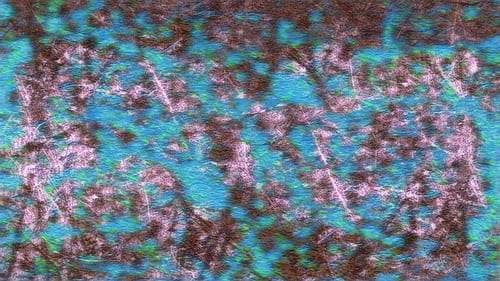
Painters Painting: The New York Art Scene 1940-1970 is a 1972 documentary directed by Emile de Antonio. It covers American art movements from abstract expressionism to pop art through conversations with artists in their studios. Artists appearing in the film include Willem de Kooning, Jasper Johns, Andy Warhol, Robert Rauschenberg, Helen Frankenthaler, Frank Stella, Barnett Newman, Hans Hofmann, Jules Olitski, Philip Pavia, Larry Poons, Robert Motherwell, and Kenneth Noland.

Cinematography
Painters Painting: The New York Art Scene 1940-1970 is a 1972 documentary directed by Emile de Antonio. It covers American art movements from abstract expressionism to pop art through conversations with artists in their studios. Artists appearing in the film include Willem de Kooning, Jasper Johns, Andy Warhol, Robert Rauschenberg, Helen Frankenthaler, Frank Stella, Barnett Newman, Hans Hofmann, Jules Olitski, Philip Pavia, Larry Poons, Robert Motherwell, and Kenneth Noland.

Director
A video film by Ed Emshwiller

Writer
In one of his first experiments in video, Emshwiller creates an electronic landscape of both abstract and figurative elements, where colorized dancers are chroma-keyed into a mutable, computer-animated environment. Working with the "Scan-i-mate," an early analog video synthesizer, Emshwiller choreographs an architectural, illusory video space, in which frames proliferate within frames, disembodied heads and hands move within a collage of animated forms, and the dancers and their environment are subjected to constant transformations through image processing. With its witty interplay of the "real" and the "unreal" in an electronically rendered videospace, and the skillful manipulation and articulation of a sculptural illusion of three-dimensionality, Scape-mates introduced a new vocabulary of video image-making.

Director
In one of his first experiments in video, Emshwiller creates an electronic landscape of both abstract and figurative elements, where colorized dancers are chroma-keyed into a mutable, computer-animated environment. Working with the "Scan-i-mate," an early analog video synthesizer, Emshwiller choreographs an architectural, illusory video space, in which frames proliferate within frames, disembodied heads and hands move within a collage of animated forms, and the dancers and their environment are subjected to constant transformations through image processing. With its witty interplay of the "real" and the "unreal" in an electronically rendered videospace, and the skillful manipulation and articulation of a sculptural illusion of three-dimensionality, Scape-mates introduced a new vocabulary of video image-making.

Director
The long version of the film titled in the short version "THERMOGENESIS"

Director
"A film version of a videotape. In it my drawings are animated and colorized by using computers. Walter Wright and Richard Froeman were on the computers. John Godfrey helped with the video editing. I did the sound score. The original tape was done on 2" high-band color videotape, two computers, a Paik-Abe video-synthesizer, with studio chroma-keying and multi-generation video editing." A version of Computer Graphics #1, one of Emshwiller's very first video works.

Director
In this spin-off from his original plan for Relativity (1966), Emshwiller continued with his desire to penetrate “space in a kind of flying camera, a dream of flying, a kind of sensual, sexual imagery where you were constantly going into an unknown space.” A trio of dancers (Carolyn Carlson, Emery Hermans, Bob Beswick) appear "first in leotards, then in bluejeans, then naked, as they “pass through rituals of movement.”

Director
A subjective film song of awareness; woman alone, woman with child, woman as scientist, woman as artist, woman with woman, woman with man. Paradox and dilemma, the human state as seen through today's suburban woman. The filmmaker explored with several women their conditions and sought ways of relating and structuring those states in a film.

Cinematography
Emile de Antonio's film decimates Richard Nixon and exposes him as a paranoid, power mad lunatic... de Antonio compiles (via video and film) what amounts to the "best of" one of the worst political figures of the 20th century. Nixon was a shameless self-promoter while trying desperately to convince everyone that he wasn't. Through Alger Hiss and the "Checkers" speech to the character assassination of Helen Gahagan Douglas (among others), there are few stones left unturned.

Director
Featuring Bill Weidner and Connie Brady, BRANCHES was made in a filmmaking workshop at Cornell University during the summer of 1970. The film was improvised around the theme of Branches of Possibilities real or imagined in Bill's pursuit of Connie. It is an attempt to structure a film out of the concerns of the time, using the college environment and student sexual drives as the principles focus. –E. E.

Editor
Ed Emshwiller’s tender portrait of his wife, avant-garde science fiction writer Carol Emshwiller.

Cinematography
Ed Emshwiller’s tender portrait of his wife, avant-garde science fiction writer Carol Emshwiller.

Director
Ed Emshwiller’s tender portrait of his wife, avant-garde science fiction writer Carol Emshwiller.

Sound Recordist
Shot during the 1968/69 school year at University of California Berkeley, Report was created as part of Norman Jacobson’s experimental political science course “Toward an Expression of the Idea of Freedom.” The film, which features cinematography by avant-garde filmmaker Ed Emshwiller, merges fiction and documentary as it portrays the widening generation gap within the university, and in society at large. At the center of the film is an uncertain teacher and the students who challenge him.

Cinematography
Shot during the 1968/69 school year at University of California Berkeley, Report was created as part of Norman Jacobson’s experimental political science course “Toward an Expression of the Idea of Freedom.” The film, which features cinematography by avant-garde filmmaker Ed Emshwiller, merges fiction and documentary as it portrays the widening generation gap within the university, and in society at large. At the center of the film is an uncertain teacher and the students who challenge him.

Director
A video piece by Ed Emshwiller
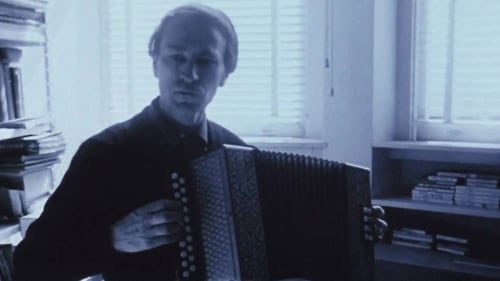
Self
An epic portrait of the New York avant-garde art scene of the 60s.

Director
This independent underground feature films two dancers (Carolyn Carlson and Emery Hermans) in silhouettes and shadows. Other couples discuss their relationships and lives in a candid display of self revelation. Street dances and conversations combine in a collage of people and places in this black and white film.

Cinematography
The ten-year-old filmmaker (and star) pays homage to the Star Trek series.

Director
A film by Ed Emshwiller that surveys, without narration, the vast human and material resources committed to the U.S. space program. Uses recurring images and sounds to depict the past dreams and doubts, the planning and engineering, the hardware, the construction and transport, the teams and the astronauts, the definition of the moon voyage, the launch of the rocket, and visions for the future.
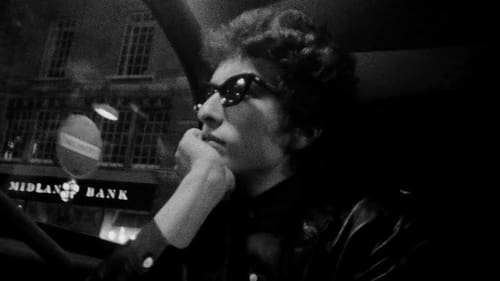
Camera Operator
In this wildly entertaining vision of one of the twentieth century’s greatest artists, Bob Dylan is surrounded by teen fans, gets into heated philosophical jousts with journalists, and kicks back with fellow musicians Joan Baez, Donovan, and Alan Price.

Director
A kaleidoscopic collage of colours and dehumanised modern dancers, making subtle use of double exposure and electronic music. Shapes move and grow to form designs which are reflected. turned. twisted and finally fragmented. to reveal an understanding for the infinitude of design.
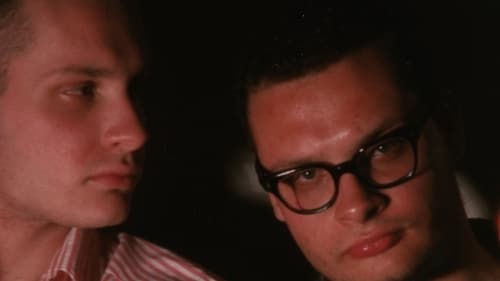
Himself
In March and April of 1966, Markopoulos created this filmic portrait of writers and artists from his New York circle, including Parker Tyler, W. H. Auden, Jasper Johns, Susan Sontag, Storm De Hirsch, Jonas Mekas, Allen Ginsberg, and George and Mike Kuchar, most observed in their homes or studios. Filmed in vibrant color, Galaxie pulses with life. It is a masterpiece of in-camera composition and editing, and stands as a vibrant response to Andy Warhol's contemporary Screen Tests.

Director
Emshwiller made this film on a Ford Foundation grant, and in his original proposal to the Ford Foundation, he outlined the film as "something that deals with subjective reality, the emotional sense of what one's perception of the total environment is -- sexual, physical, social, time, space, life, death."

Director
A film based on play by Wilford Leach

Director
A look at painting, sculpture and the dance in the United States today, as represented by works of many of its best-known artists - Andrew Wyeth, Andy Warhol, Jasper Johns, Roy Lichtenstein, Robert Rauschenberg, Robert Motherwell, Jackson Pollock, Ben Shahn, Jack Levine, Robert Indiana, Larry Poons, Alexander Calder, Marisol, Edward Keinholz, Larry Rivers, Claes Oldenburg, the Martha Graham Dancers, Merce Cunningham and Dance Company, the Alwin Nikolais Dance Company, the Once Group (a happening), etc.

Director
Employing experimental techniques, Emshwiller magically moved through a collection of objects and artifacts in order to capture the spirit of George Dumpson and his backyard museum.

Cinematography
"In Spring, 1963 Show Magazine called me and asked that I make a film on arts in New York. I told them, why did they want me to make it - didn't they know I was a bit unusual? ... 'We want something unusual,' they said. So I went out and made a newsreel on arts. Show people looked at the rough cut of the film and became very angry. 'But there is nothing about Show Magazine and DuPont fabrics in the movie,' they said. 'What has that to do with the arts in New York!' I said. The battle was short. The film was destroyed. Really, I have no idea what they did with it. This workprint of the first FILM MAGAZINE OF THE ARTS is the only print in existence, as far as I know." -- J.M.

Director
An impressionistic portrait of America's diversity

Director
This biker documentary was selected for screening at the 1964 Flaherty Film Seminar. Emshwiller described it as "a roaring picture of motorcyclists in action. Modern Lancelots and their ladies-in-waiting go wide open for a day at the races. An impressionistic film of guys and gals who get their kicks in direct physical action."

Director of Photography
A filmic interpretation of a modern dance ballet by Alvin Nikolais. Earth, fire, water and primordial mysteries in a cine-dance.

Editor
A filmic interpretation of a modern dance ballet by Alvin Nikolais. Earth, fire, water and primordial mysteries in a cine-dance.

Director
A filmic interpretation of a modern dance ballet by Alvin Nikolais. Earth, fire, water and primordial mysteries in a cine-dance.
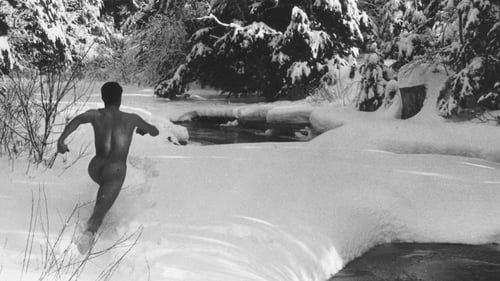
Gideon
Jack and Leo vie for the affections of Vera- who appears a little differently to each man- over the course of a series of energetic sketches, flashbacks and homages.

Cinematography
Jack and Leo vie for the affections of Vera- who appears a little differently to each man- over the course of a series of energetic sketches, flashbacks and homages.

Director
A short documentary by Ed Emshwiller of the March on Washington.

Cinematography
A delightful short film shot in reverse in which the main protagonist enjoys a day on the town.

Cinematography
THE STREETS OF GREENWOOD (1962), looks at voter registration efforts by the Student Non-Violent Coordinating Committee (SNCC)and a concert in a cotton field in the Mississippi Delta. One of the first films made about the southern civil rights movement

Camera Operator
A comedy short which pokes merry anarchistic fun at such quintessential American institutions as mom, baseball, and apple pie. It features an early appearance from actor John Cazale.

Director
Power saws and a heartbeat score this experimental light-and-color shot by Ed Emshwiller.

Art Direction
A wandering drifter, religious fanatic Gaunt, accidentally sees the rape/murder of a black woman, Marie, by farm boy Ted. The boy's father, Link accuses Gaunt of committing the crime and attempts to get his son to kill both Gaunt and another witness, Marie's mute son. The two victims escape, pursued by father, son and town sheriff Cal into the woods where Gaunt kills Ted and is wounded by Link. With an infected wound, the delirious Gaunt relives his past in flashback, revealing that he was one of the Enola Gay crew members responsible for dropping the atom bomb on Hiroshima.

Editor
A wandering drifter, religious fanatic Gaunt, accidentally sees the rape/murder of a black woman, Marie, by farm boy Ted. The boy's father, Link accuses Gaunt of committing the crime and attempts to get his son to kill both Gaunt and another witness, Marie's mute son. The two victims escape, pursued by father, son and town sheriff Cal into the woods where Gaunt kills Ted and is wounded by Link. With an infected wound, the delirious Gaunt relives his past in flashback, revealing that he was one of the Enola Gay crew members responsible for dropping the atom bomb on Hiroshima.

Cinematography
A wandering drifter, religious fanatic Gaunt, accidentally sees the rape/murder of a black woman, Marie, by farm boy Ted. The boy's father, Link accuses Gaunt of committing the crime and attempts to get his son to kill both Gaunt and another witness, Marie's mute son. The two victims escape, pursued by father, son and town sheriff Cal into the woods where Gaunt kills Ted and is wounded by Link. With an infected wound, the delirious Gaunt relives his past in flashback, revealing that he was one of the Enola Gay crew members responsible for dropping the atom bomb on Hiroshima.

Director
A combination of animated line drawings with live photography of a nude model. A play on the title (living lines, life model, procreation and hand life line).

Director
The pointillist score accompanies changing line, form, and color to create an animated film painting, achieved through the exploration of spontaneous abstractions. Utilizes evolving changes style, technique and rhythm.

Director
Dance Chromatic (1959), integrates film and painting. Dance Chromatic reveals that the contradiction between the desire to convey the organic growth of form and painting's lack of temporal extension led Emshwiller into filmmaking. - R. Bruce Elder

Director
The third film by Ed Emshwiller

Director
The Second film by Ed Emshwiller

Director
The first film by Ed Emswhiller

Director
A film by Ed Emshwiller made with writers from the Original Milford Science Fiction Writers Conference. Silent film. Mid 1950s.








